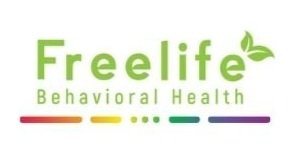From Spark to Shutdown: A Queer Guide to AuDHD Burnout and Recovery
Living with both autism and ADHD means running two operating systems at once—always switching windows, always patching bugs. It’s exciting, creative, and exhausting. Sooner or later, many of us hit a wall known as AuDHD burnout. Understanding what it is—and how it differs from other kinds of exhaustion—can be the first step toward healing.
What Does AuDHD Burnout Feel Like?
Picture a laptop with too many tabs open. The fan whirs, the screen lags, and then everything freezes. AuDHD burnout feels similar:
Brain fog so thick you forget what you’re saying mid-sentence.
Sensory spikes—lights sting, sounds jab, fabrics itch.
Executive paralysis—dishes pile up, emails go unanswered, even fun hobbies feel heavy.
Mood swings—irritation, shame, or flat-line numbness.
Because AuDHD blends two neurotypes, the crash can be dramatic. Your ADHD side still craves novelty, while your autistic side begs for quiet. Caught between “do everything” and “do nothing,” it makes sense that you may short-circuit.
What Does Autistic Burnout Feel Like?
Autistic burnout shares some traits with AuDHD burnout, but there are differences:
Withdrawal—social, emotional, sometimes physical.
Loss of skills—speech slows, coordination slips, routines collapse.
Extreme fatigue—sleep can’t fix it, coffee can’t mask it.
Where autistic burnout often follows long stretches of masking or sensory overload, AuDHD burnout layers on ADHD’s executive struggles and impulsive guilt spirals. You’re not just tired—you’re torn.
How Does AuDHD Differ from ADHD?
ADHD alone is mostly about attention regulation, hyperactivity, and impulsivity. Autism centers on sensory processing, social communication, and need for predictability. With AuDHD you get both sets of wiring:
Your mind races (ADHD) yet loves deep focus on niche interests (autism).
You chase stimulation (ADHD) yet overload quickly (autism).
You miss details (ADHD) yet notice tiny pattern shifts (autism).
Because these traits clash, everyday life demands extra energy. That constant self-management is why AuDHD burnout can appear sooner and last longer than typical ADHD exhaustion.
What is the Burnout cycle of Autism?
Researchers describe a loop: Accumulation → Breakdown → Recovery → Adaptation.
Accumulation – weeks or months of masking, sensory stress, and social effort build up.
Breakdown – energy tank hits empty; shutdowns or meltdowns occur.
Recovery – reduced demands, quiet environments, special interests, and rest.
Adaptation – new boundaries, tools, and support are added.
With AuDHD burnout, this cycle speeds up. ADHD impulsivity pushes you to keep saying “yes” even when your autistic battery is blinking red. The breakdown can arrive with little warning, and recovery may require stricter boundaries around tasks, noise, and social commitments.
Why Queerness Matters
Queer people with AuDHD juggle yet another layer: navigating identity in spaces that may not understand them. Living in multiple margins means more masking, more micro-aggressions, more vigilance. Pride festivals can be affirming but also loud, crowded, and schedule-breaking—perfect storm conditions for AuDHD burnout.
Community helps, but only if it’s accessible. Quiet queer meetups, sensory-friendly dance nights, and online support groups can give relief without overload. Therapy that respects neurodivergence and queerness can turn survival into sustainable self-care.
Five Ways to Break the Burnout Loop
Audit sensory input
Carry earplugs, adjust lighting, choose soft fabrics. Small tweaks can prevent big crashes.Use interest-based breaks
Hyperfocus isn’t the enemy—use it. Ten minutes watching a favorite analysis video or arranging a playlist can reset your brain.Block off recovery time
Treat rest as a standing appointment, not a reward. Color-code downtime in your calendar the way you would a meeting.Externalize tasks
Sticky notes, phone alarms, or body-double work sessions keep ADHD drift in check so it doesn’t pile stress on your autistic need for order.Seek affirming therapy
A clinician who gets AuDHD, queer identity, and racial or cultural context can help you design realistic routines instead of prescribing generic “self-discipline.”
Ready to recharge?
If the shutdown signs are flashing—missed deadlines, sensory snap-outs, social hangovers—it may be time for expert backup.
Our staff is trained and skilled in helping people navigate life with ADHD or autism. One of our staff who really enjoys and specializes in this work is Julleon Garrison, LCSW. He offers therapy that centers neurodivergent and queer experiences. He understands that AuDHD burnout isn’t laziness; it’s a signal your systems need care.
Book a session with Julleon today here and start turning burnout into balanced living.
